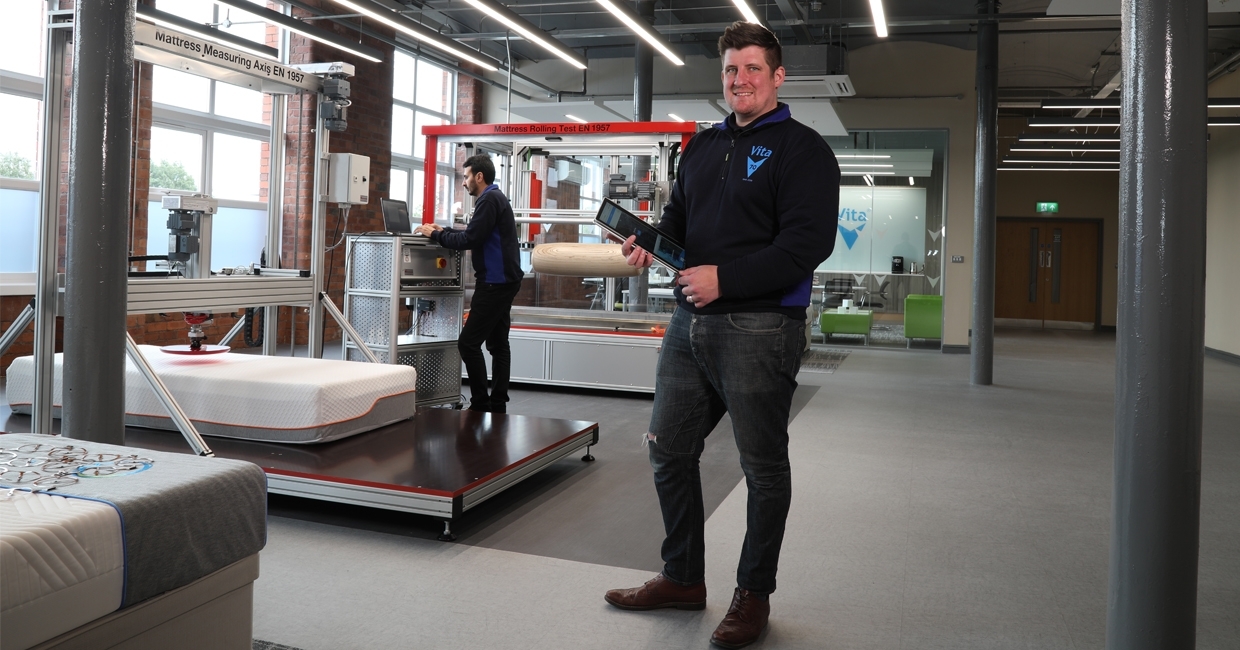As businesses strive to meet ever-higher standards of sustainable practice, it can be easy to overlook the benefits of existing solutions – including those which have been repurposed exactly for that reason, writes Julie Walker, technical manager at foam industry innovator The Vita Group …
Another round of COP discussions has ended, yet the warnings around climate change show little sign of slowing down. Reversing the trend to meet the Paris Climate Accord benchmark agreed in 2015 to limit temperature increases to just 1.5°C requires cultural change and difficult decisions, and every business sector rethinking what it is doing and how it can adapt
Circling the issue
A circular economy is one in which no material is wasted at any point, as it is recovered and fed back into the production and consumption cycle.
Getting to this point will require several vital investments, particularly in how we repurpose ‘end-of-life’ materials – a central focus at The Vita Group, where we have been at the vanguard of reusing trim materials to avoid them being sent to landfills. We have also turned our own and our customers’ trim and by-products into new goods. In fact, in 2021 alone, over 30,000 tonnes of material were repurposed instead of being sent to landfill.
Our work on advancing the sector’s circularity has also seen us give the existing foam a new lease of life by turning it into underlay flooring solutions through our flooring division, and into Shockpad underlay for artificial sports pitches via our Revosport team. We’ve even explored how to recycle PU foam into hydroponic green roof materials, a great example of how it’s possible to develop new applications for rebonded materials.
To take this to the next level, we have embarked on a series of partnerships to convert end-of-life PU foam into new raw materials. This has allowed us to introduce the Orbis range of flexible polyurethane (PU) foam, made using the repolyols created from raw materials extracted from recycled mattress content.
Thanks to these natural environmental advantages and the creative ways in which we know we can push the sustainable envelope, it’s highly apparent that PU foam is a true enabler of a net-zero economy.
Innovative thinking
We know that there isn’t just one ‘silver bullet’ solution to achieving a lower-carbon economy. Instead, it will require multiple technologies, ideas, processes and partnerships working in combination to help us strive toward greenhouse gas (GHG) neutrality and creating a truly circular economy.
This is why investing in innovation is so important. It’s about taking the next steps on the R&D journey and challenging received wisdom with the right facilities and processes in place. To help the PU foam industry get to this point, we’ve initiated a number of green projects with key partners, and opened four state-of-the-art innovation centres across Europe. We are committed to providing the supply chain with the sustainable options they need, and reducing the industry’s dependence on less environmentally friendly materials and processes.
Indeed, whenever we develop a new product, we build a sustainable element into its design. In practice, this has ranged from replacing petrochemically derived raw materials with sustainable bio-polyols, feeding end-of-life materials back into our processes, and reducing the weight of products to streamline logistics.
PU foam’s green credentials
PU foam is highly applicable to a wide range of applications – and can be manufactured, processed and recycled very sustainably.
When looking to a more environmentally friendly future, the green benefits of flexible PU foam should not be overlooked. For example, its light and flexible nature mean it is quick and easy to transport, minimising the emissions incurred during transportation. PU foam’s versatility also means that just one production process can be employed for multiple purposes, while its durability reduces the need for additional manufacturing.
On top of all this, it is much easier to recycle en masse than alternatives like wool, hemp, feathers and horsehair, which means that internal and external circular economies can be achieved.
The way forward
The need to change is clear. Relying on business as normal and waiting for legislation to drive change won’t be enough, but the PU foam industry is well placed to lead the advanced polymer composites market on its sustainability journey.









